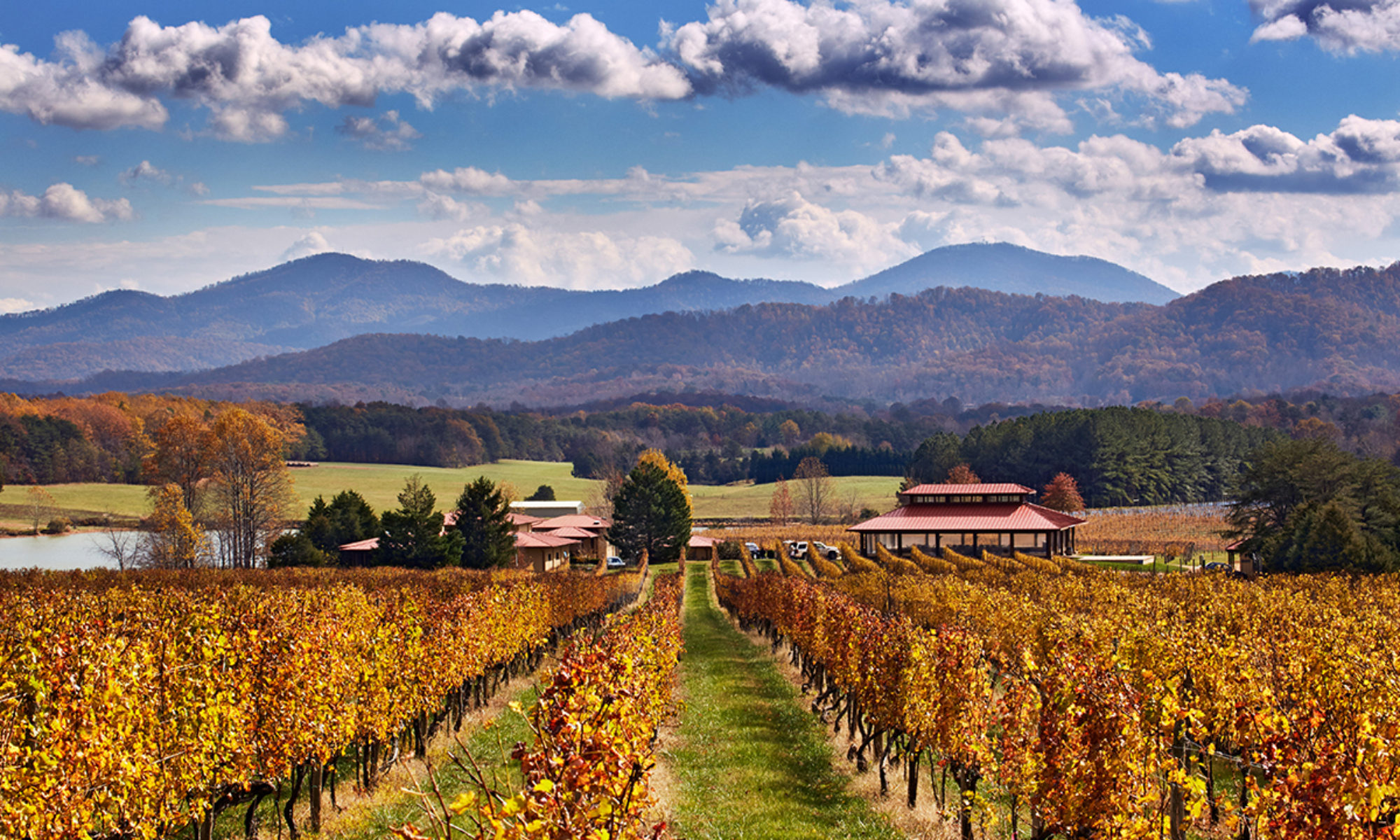Located in Dyke, in Greene County. Stone Mountain Vineyards sit in Bacon Hollow, at 1,700 feet altitude on Wyatt Mountain Road. The winery was founded in 1986 by Al Breiner, and is one of the oldest wineries in Virginia. It is now owned by Jim and Deanna Gephart, former government workers who bought Stone Mountain in 2011. As of early 2023, the winery was up for sale.
Wine. Tier II. Wide selection, with “Bacon Hollow Revenuer’s Select”, Chardonnay, and Pinot Grigio among the whites, and “Bacon Hollow Sunset,” Cabernet Franc, Merlot and Petit Verdot among the reds. Virginia wine pioneer and legend Gabriele Rausse consults on the wines. Grapes are mainly from the estate, supplemented by grapes outsourced elsewhere in the Monticello AVA.
Setting. Three stars. Among the best views in the state. The tasting room includes an observation deck with sweeping views of the valley from 1,700 feet. Somewhat small indoor space but comfortable seating, hardwood floors and good light. Pizza and snacks are available and picnics can be brought with you. Driving up the mountain and along the gravel road’s hairpin turns to the winery can be a challenge, so bring a car than can handle gravel and mud.
Stories. Bacon Hollow and Virginia folk-singing. A rich part of Virginia’s musical heritage are the folk-music and ballads from Virginia’s mountains. Brought to small frontier and mountain communities by immigrant families, often from Scotland, Ireland and England, singing and banjo-playing were an essential part of life – and of survival – in Appalachia. One of Virginia’s most famous folk singers was born in 1895 in Bacon Hollow, in the highlands of Greene County, as Victoria Shifflet. Bacon Hollow is contained by Flattop, Wyatt, Hightop and Snow Mountains. Roach River, proceeding from below Powell Gap, runs the full length of the Hollow. With no electricity and with a water supply that only ran outdoors and downhill, every day was a tough haul for the Shiffletts simply to keep their growing family fed and clothed. Wage paying jobs were seasonal, few and dangerous: stave mill jobs, cutting and dragging timber logs, saw mill work, digging sassafras stumps and roots or stripping tree bark to sell. One of the rare distractions in this tough environment was singing of ballads, and it was a very important part of the family and communities in which young Victoria was nurtured. Around the time she married Leonard Morris in 1919, song collectors had begun coming into the hinterlands of Appalachia in search of the old tunes, to preserve variants of original English and Scottish popular ballads before the singers, along with their songs brought over from the old country, were lost. Owing to the remoteness and difficult access in certain regions of Appalachia, pockets of singers could still be found who remained uncorrupted by more contemporary musical influences. A handful of traditional singers in central Virginia eventually would be singled out for special honor. First Lady Eleanor Roosevelt came to the Whitetop Folk Festival in southwest Virginia, where she was entertained with the musical traditions of mountain singers, dancers and musicians, and requested that a contingent of traditional singers and musicians from central Virginia perform in concert at the White House. Victoria Morris was among the group chosen, as she and her Shifflett cousins Ella and Florence were “some of the most outstanding folksingers in the area.” In attempting to describe the voice of Victoria Morris captured on early field recordings, Ernest C. Mead Jr., then-chairman of the music department and now professor emeritus at the University of Virginia, wrote, “No system of notation can adequately catch the epic quality of Victoria Morris’ severe yet intense and figured style…” A short time after the concert, a package arrived from the White House. It contained a photograph of the First Lady, personally inscribed to Victoria—framed in wood that originally had been used in the reconstruction of the White House roof following its burning by the British Army during the War of 1812. The treasured keepsake had a small, engraved brass plaque affixed to it stating its provenance (with thanks to “The Secrets of the Blue Ridge”). Today the Virginia Folklife Program tries to maintain the tradition, and the stories, that Victoria Morris and others have passed along.
